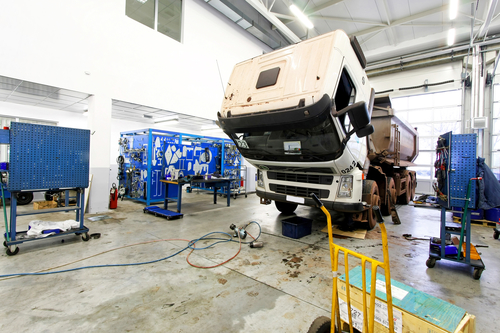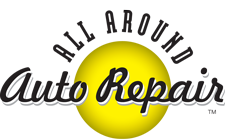“We take better care of the maintenance of our cars than we take care of the maintenance of our bodies.” — David H. Murdock
Man, if this isn’t the truth then we don’t know what is. I think all fleet managers can agree with the fact that vehicle maintenance comes in these two form types, Scheduled and Unscheduled.
I believe David H. Murdock was saying in his quote above, that we need regularly scheduled health checkups, in order to detect and fix medical issues before they become serious medical issues. Just as important are scheduled preventative fleet vehicle maintenance appointments. These can help prevent, detect and repair minor issues before they can become bigger and more expensive problems.
As with our bodies, an unscheduled injury or checkup will happen over the course of time. In the case of fleet vehicle maintenance, unscheduled checkups most likely will happen when something breaks down. Unfortunately, yet true, the cost for this will be much higher. So many factors play a part in the reason for this cost increase. More down time for diagnostics, there wasn’t regular scheduled checkups, or just a real tough fix are just a few examples for the cost increase.
 An effective fleet vehicle maintenance plan is easy to develop. It’s also a terrific way to keep up to date and keep being effective. Here are some tips and effective ways to start implementing an effective fleet vehicle maintenance plan.
An effective fleet vehicle maintenance plan is easy to develop. It’s also a terrific way to keep up to date and keep being effective. Here are some tips and effective ways to start implementing an effective fleet vehicle maintenance plan.
Questions to start with
Before you dive into the start of your fleet vehicle maintenance, it’s a great idea to develop your plan. It’s even more important to stick to that plan. Just like our bodies, our cars work better on a routine. When you stray from the routine, it can do more harm than good. So, sit down and ask yourself these three questions to start:
- What should be covered in the preventive maintenance checkup?
- Who will be responsible for preventive maintenance service?
- When will the service take place?
What’s Covered
We’d highly recommend a checklist for any of your vehicles. So, develop a checklist from the list below. Definitely cater your list, from this list, to what your own fleet vehicle maintenance needs are. If you don’t quite know how to make your checklist, please, reach out and contact us here. We are more than happy to help you put together a list and even schedule some time for future maintenance.
- Engine oil and filter changes
- Transmission fluid
- Fuel system
- Cooling system
- Engine and transmission mounts
- Drive shafts or CV joints
- Belts and hoses
- Tune-ups
- Electrical system components
- Braking system
- Steering and suspension system
- Tires, wheels, and rims
- Exhaust system
- Undercarriage and frame
- Exterior and interior lights
- Body, glass, and mirrors
- Windshield wiper system
- Horn
- Seatbelts and seat structures
- Fluid leaks
- Auxiliary systems
Who’s Responsible
Make this a team effort between your drivers and your repair technicians. Your drivers are the first line of defense against unexpected breakdowns and repairs. It’s critical that they immediately report any vehicle problems to help keep your vehicles on the road. Drivers can and should be trained to monitor basic vehicle safety items. Tires, brakes, steering, etc., vehicle performance issues, including misfires and rough idling, and miscellaneous items such as the heater or radio. The repair technicians you choose to go with, either in-house or subcontracted, they can perform a more detailed inspection on all your vehicle’s components and systems. If you outsource repairs, be sure to supply the vendor with your own preventive maintenance checklist. Shops may focus on breakdown maintenance, not preventive maintenance.
When’s the Best time
To develop the very best fleet vehicle maintenance plan, you should start examining all of your past and present routine and unscheduled maintenance data. This will help you develop a maintenance schedule that fits perfectly for your fleet. Miles traveled, engine hours, fuel usage, and calendar time are the typical guides used to create your fleet maintenance schedule. You should also start tracking the number of breakdowns, jump starts, tows, and emergency repairs. Any patterns that arise may adjust your maintenance schedule to accommodate for that new data.
In the End
This blog is just a post to help you understand, act, and feel good about a fleet vehicle maintenance plan. Just like with our bodies, planning a doctor visit before you visit Africa is probably a great idea. Your Doctor will tell you if you are physically capable of making the trip. If you are, your doctor will prescribe the shots your body needs, so you don’t get Malaria. The same goes for your fleet vehicle maintenance. Planning and having all your ducks in a row will help you save time and money in the long run. We’d love for you to contact us at All Around Auto and Repair for any questions or to set up an appointment.

